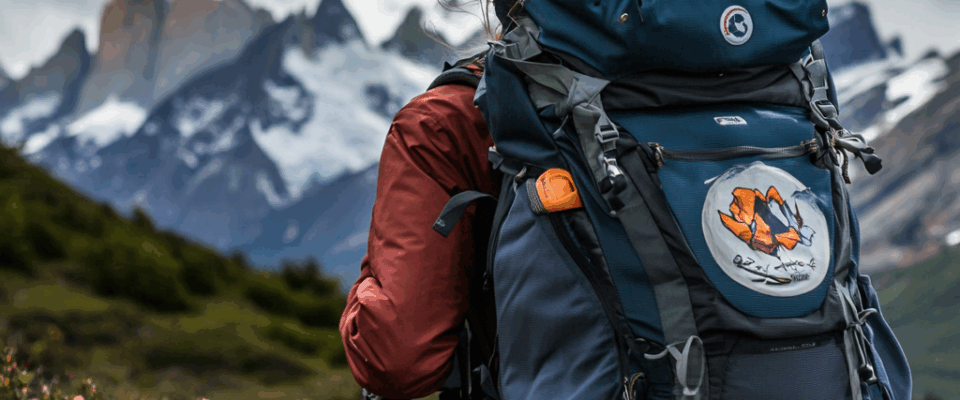Determine the Duration and Type of Your Hike
When choosing a backpack for a multi-day hike, one of the most important first steps is identifying the length and nature of your hike. A two-day trek in mild conditions will demand far less gear than a seven-day expedition in remote, mountainous terrain. The longer the hike, the more food, clothing, and supplies you’ll need to carry, which directly affects the size and features of the pack you should choose. Weather is another key factor—colder or wetter conditions usually require heavier and bulkier gear, like insulated clothing, extra layers, or sleeping bags with higher temperature ratings.
Beyond trip length, you also need to consider the hiking style and the logistics of your route. Will you have access to resupply points, or must you carry everything from start to finish? Are you hiking on maintained trails or bushwhacking through the backcountry? Trips that involve challenging terrain or off-trail navigation often require sturdier, more stable backpacks with secure load distribution. Thinking through your specific hiking environment will help you select a backpack built for the demands of your unique journey.
Understand Backpack Capacities and Sizes
Backpacks for multi-day hikes typically range from 40 liters to 80 liters in volume. Smaller packs in the 40–50L range may work for minimalist hikers on 2–3 day trips, especially in warm weather when bulky clothing isn’t required. However, for longer treks of 5 days or more, or when extra gear like bear canisters, cold-weather equipment, or group supplies are needed, a 60–80L backpack provides the space necessary to carry everything safely and comfortably.
However, capacity isn’t the only aspect to consider—fit and proportion are equally important. Backpack size is based on torso length and hip circumference, not height alone. A poorly fitting backpack, even one with the right volume, can cause discomfort, imbalance, and long-term strain. Most backpack brands offer adjustable harness systems or multiple size options to accommodate different body types. Visiting a store for a fitting or measuring yourself at home can help ensure your pack aligns well with your frame and offers the necessary support for the load you’ll carry.
Focus on Fit and Comfort
Comfort should be at the forefront of your decision when choosing a hiking backpack, especially for multi-day treks. A good pack should contour to your body and shift weight efficiently from your shoulders to your hips, where your body is better equipped to carry heavy loads. Look for well-padded shoulder straps and hip belts, adjustable torso lengths, and load-lifter straps that help fine-tune the distribution of weight. The more adjustable the backpack, the better you can tailor it to your specific build and comfort needs.
Ventilation also plays a critical role in comfort. On warm or humid hikes, poor airflow between your back and the pack can lead to excessive sweating and chafing. Many modern backpacks feature suspended mesh back panels or air channels that improve breathability without compromising support. Since you’ll be wearing your backpack for extended periods over varied terrain, it’s wise to try it on fully loaded before heading into the wilderness to ensure it feels right under real conditions. Testing for comfort before buying can save you hours of discomfort and frustration on the trail.
Evaluate Frame Types and Support Features
The frame of your backpack is what provides structure and allows it to carry weight efficiently. Internal frame backpacks dominate the market today for multi-day hikes due to their close-to-body fit and stability on rugged terrain. These packs use metal or plastic stays integrated into the back panel to support weight and help it move with your body. They’re ideal for hikers navigating uneven ground or scrambling over rocks, where balance and freedom of movement are essential.
External frame backpacks, while less common now, still have their place. They’re useful for carrying very heavy or awkward loads, such as large water containers or game during hunting trips. Their rigid structure offers excellent airflow and allows for more gear to be strapped externally, though they’re bulkier and less agile than internal frame models. Frameless backpacks, on the other hand, are ultra-light and suited for experienced hikers who are confident in packing efficiently and keeping their loads below 20–25 pounds. Regardless of frame type, features like a strong hip belt, tensioned suspension, and adjustable load management systems are crucial to maintaining posture and reducing fatigue during long hikes.
Assess Access, Compartments, and Organization
Organization is key when living out of your backpack for days at a time. While many larger backpacks are top-loading, meaning you access gear through a single top opening, this design can be frustrating when you need something buried at the bottom. To improve convenience, look for packs with additional access points like front-loading panels, side zippers, or sleeping bag compartments that let you reach specific items without unpacking everything. Some packs also feature removable top lids that double as daypacks or fanny packs, adding versatility for shorter side hikes or summit attempts.
Effective use of compartments and external storage keeps your gear organized and easy to access. Stretchy side pockets are great for water bottles or tent poles, while hip belt pockets keep snacks, maps, or a phone within reach without removing your pack. Internal compartments can separate wet gear, food, and clothing, and compression straps stabilize the load while allowing you to attach bulky items like sleeping pads or trekking poles. The more thoughtfully your backpack organizes gear, the less time you’ll spend rummaging and the more focused you’ll stay on enjoying your hike.
Consider Weight, Materials, and Durability
Finding a balance between weight, materials, and durability is essential when choosing a backpack that will last over many trips. Ultralight packs often weigh less than 3 pounds, appealing to minimalist hikers who prioritize speed and efficiency. However, these lighter materials may be more prone to wear and tear, especially on rugged terrain or in bad weather. Heavier packs, while more durable, may include reinforced fabrics, extra padding, and robust hardware that increase both weight and cost—but offer better long-term reliability.
Here are five key considerations when evaluating pack construction:
- Fabric: Choose packs made from ripstop nylon, Dyneema, or Cordura for a good balance of weight and abrasion resistance.
- Weather Protection: Built-in rain covers, water-resistant zippers, or waterproof panels help protect your gear in wet conditions.
- Hardware: Durable buckles, zippers, and clips are critical; choose packs with well-rated components that won’t break mid-hike.
- Seams and Stitching: Reinforced or double-stitched seams in high-stress areas improve the pack’s resilience under load.
- Design Efficiency: Look for smart layouts that give you the features you need without adding unnecessary bulk or complexity.
Ultimately, your backpack should be tough enough to endure scrapes, shifting weather, and heavy loads, while still being light and comfortable enough to carry for long periods. Don’t be tempted to choose solely based on the lightest weight—prioritize function, durability, and fit to find the best option for your adventure.
Question and Answer
Answer 1: Consider hike duration, terrain, weather, and whether you’ll resupply or carry everything.
Answer 2: Larger capacities suit longer trips; fit depends on torso length and hip size for comfort.
Answer 3: Padded straps, a strong hip belt, adjustable harnesses, and ventilation systems.
Answer 4: Internal frame backpacks offer balance, flexibility, and stability on uneven ground.
Answer 5: Use packs with multiple access points, compartments, side pockets, and compression straps.

